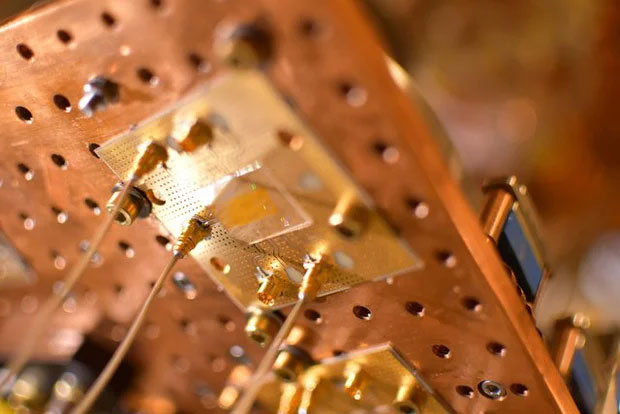While traditional computer chips rely on electricity, a new generation of chips is beginning to use light to transmit information internally. Now, scientists at Harvard are showcasing a new type of chip that can transmit data in the form of sound waves.
Essentially, computer chips and circuits send and process data by controlling specific types of signals. The vast majority of today’s devices and processing chips use electricity, or charged particles, where their flow is directed by components like transistors to encode data into binary form – by turning the electric current on and off.
Recently, some light chips have been developed to control the photon particles of light and transmit them through narrow conduits known as “waveguides” to convey data within the chip.

The new chip can transmit data in the form of sound waves.
The new sound chip operates similarly to light chips but utilizes sound waves instead of light waves. To achieve this, the research team created a modulator from a material called Lithium Niobate, which can change its elasticity depending on the electric field applied to it, generating sound waves. By carefully adjusting this electric field, the modulator can control the state, amplitude, and frequency of the sound waves, encoding data before transmitting it through the waveguides.
But what benefits does this bring? According to the research team, these acoustic wave chips have several advantages over electromagnetic wave chips. These sound waves can be easily confined within small waveguide structures, they do not interfere with each other, and they can interact strongly with other components of the system in which they are used.
Marko Loncar, the lead author of this study, stated: “Acoustic waves promise to be a means of transmitting information within chips, suitable for both traditional data processing and quantum data, but the development of acoustic integrated circuits has been hindered by the inability to control sound waves in a scalable and low-loss manner.”
“In this work, we demonstrate the ability to control sound waves on an integrated Lithium Niobate platform, bringing us one step closer to acoustic integrated circuits.”
By proving the functionality of the world’s first acoustic wave chip, the research team is now working on building more complex acoustic integrated circuits and exploring how to connect them with quantum computing components, such as superconducting qubits.


















































